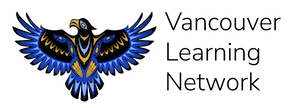Foundations of Math 11
Foundations of Mathematics 11 Course Overview
Big Ideas
Similar shapes and objects have proportional relationships that can be described, measured, and compared. | Optimization informs the decision-making process in situations involving extreme values. | Logical reasoning helps us discover and describe mathematical truths. | Statistical analysis allows us to notice, wonder about, and answer questions about variation. |
From: https://curriculum.gov.bc.ca/curriculum/mathematics/11/foundations-of-mathematics
Introduction
Foundations of Mathematics 11 is an academic course designed to provide the necessary critical-thinking skills and mathematical understanding for students who plan to go to post-secondary programs that do not require calculus. The material covered in this course builds on the skills and content from Foundations of Mathematics and Pre-Calculus 10 as well as introducing new concepts.
This course is self-paced and is designed to engage students using a series of online video lessons and then providing practice questions for students to complete. There are 8 units in the course and each unit has several videos and a learning guide to help you follow along in the course and practice new concepts. There is also an in-person midterm and final exam.
Where does this course fit?
- Prerequisites: Foundations of Mathematics and Pre-Calculus 10
- Graduation Status: One of the Grade 11/12 Math options required for graduation
- Foundations of Mathematics 11 can be used for the BC Graduation Mathematics 11 requirement for students who do not intend to go into programs requiring calculus.
- Students who successfully meet the learning outcomes for this course may continue onto Foundations of Mathematics 12.
Course Materials
- All course content, videos, and practice questions are online. A computer is needed to access these.
- A scientific calculator is recommended, but not essential.
- Lined and graphing paper as well as pencil, pen erasers are recommended for students to use for note taking and working on practice questions.
Brief Outline
Unit | Description |
Reasoning | Developing strategies and apply mathematical understanding to problem solve using inductive and deductive reasoning. |
Financial Literacy | Exploring compound vs simple interest for investments and loans. |
Angles | Explore the properties and relationship of angles associated with parallel lines and with geometric figures. |
Rates, Ratios & Scales | Analyze scale factors and proportions of various 2 and 3-dimensional figures. |
Equations and Graphs | Explore the characteristics of lines and use technology to graph linear equations and systems of equations. |
Quadratic Functions | Explore the characteristics and properties of quadratic functions and optimal solutions to max/min applications. |
Inequalities | Use technology to graph inequalities and analyze optimal solutions to applications. |
Application of Statistics | Collecting data and interpreting it through central tendencies, standard deviation, and confidence intervals. |
Assessment Percentage Breakdown
Assessment Type | Percentage of the Course |
Startup quiz and assignment | 5% |
7 Unit Assignments | 21% |
14 small unit quizzes | 7% |
7 Unit Test | 17% |
Midterm exam | 20% |
Final exam | 30% |
You have up to a year to complete your course.

